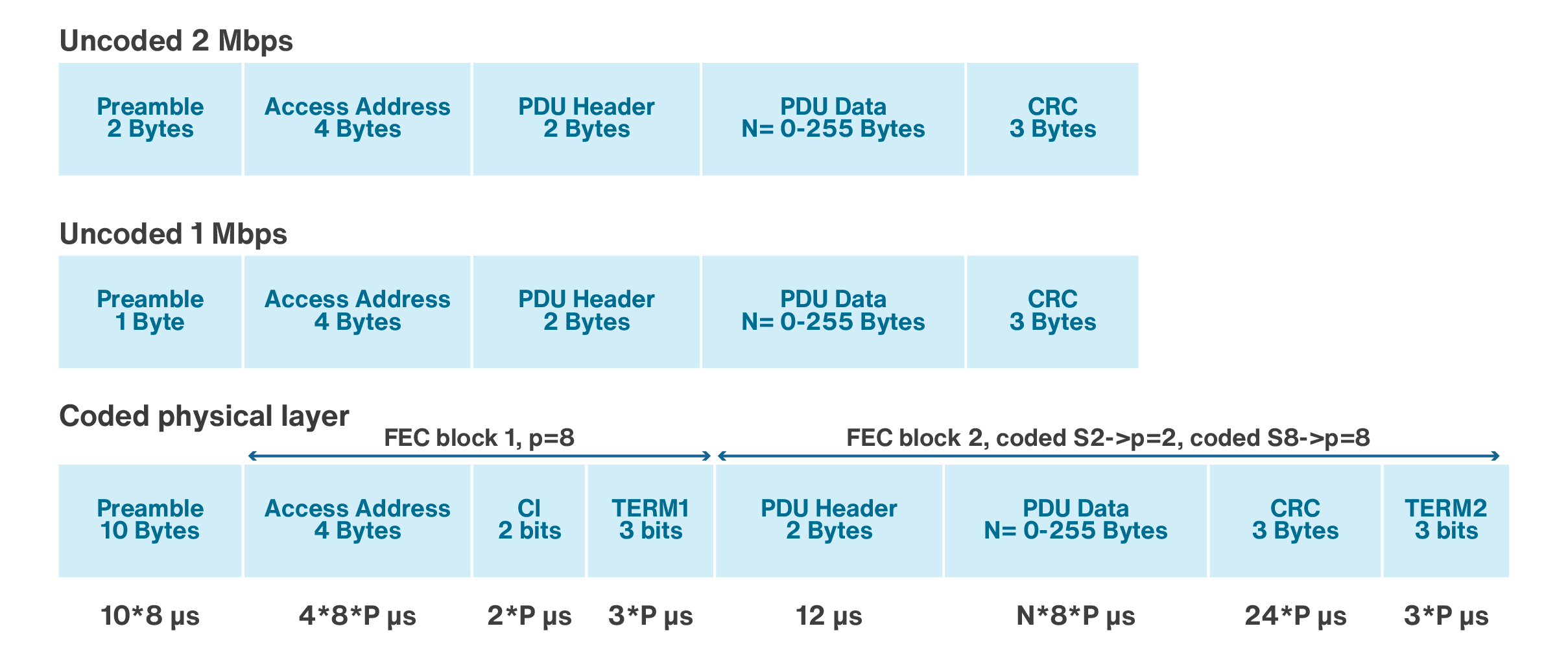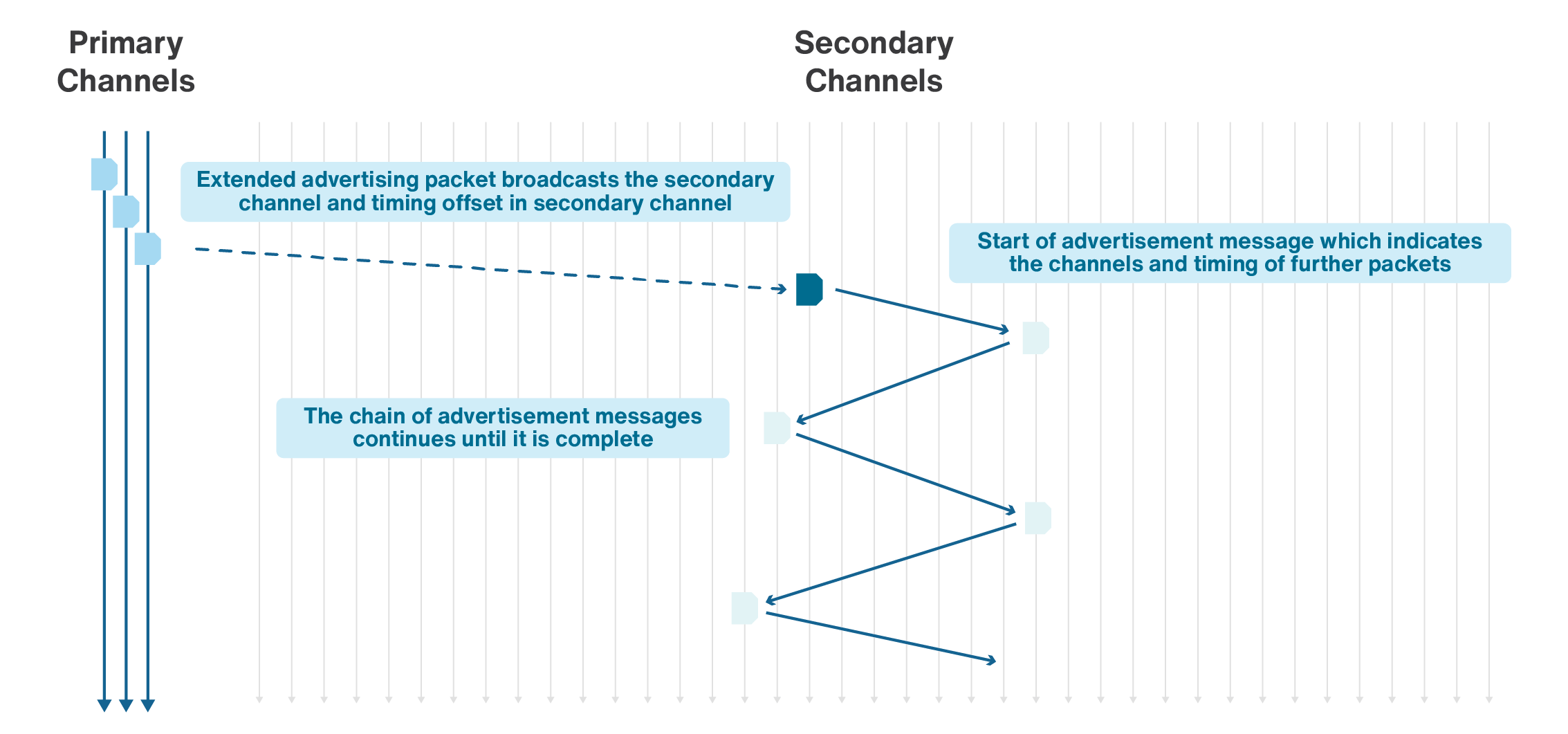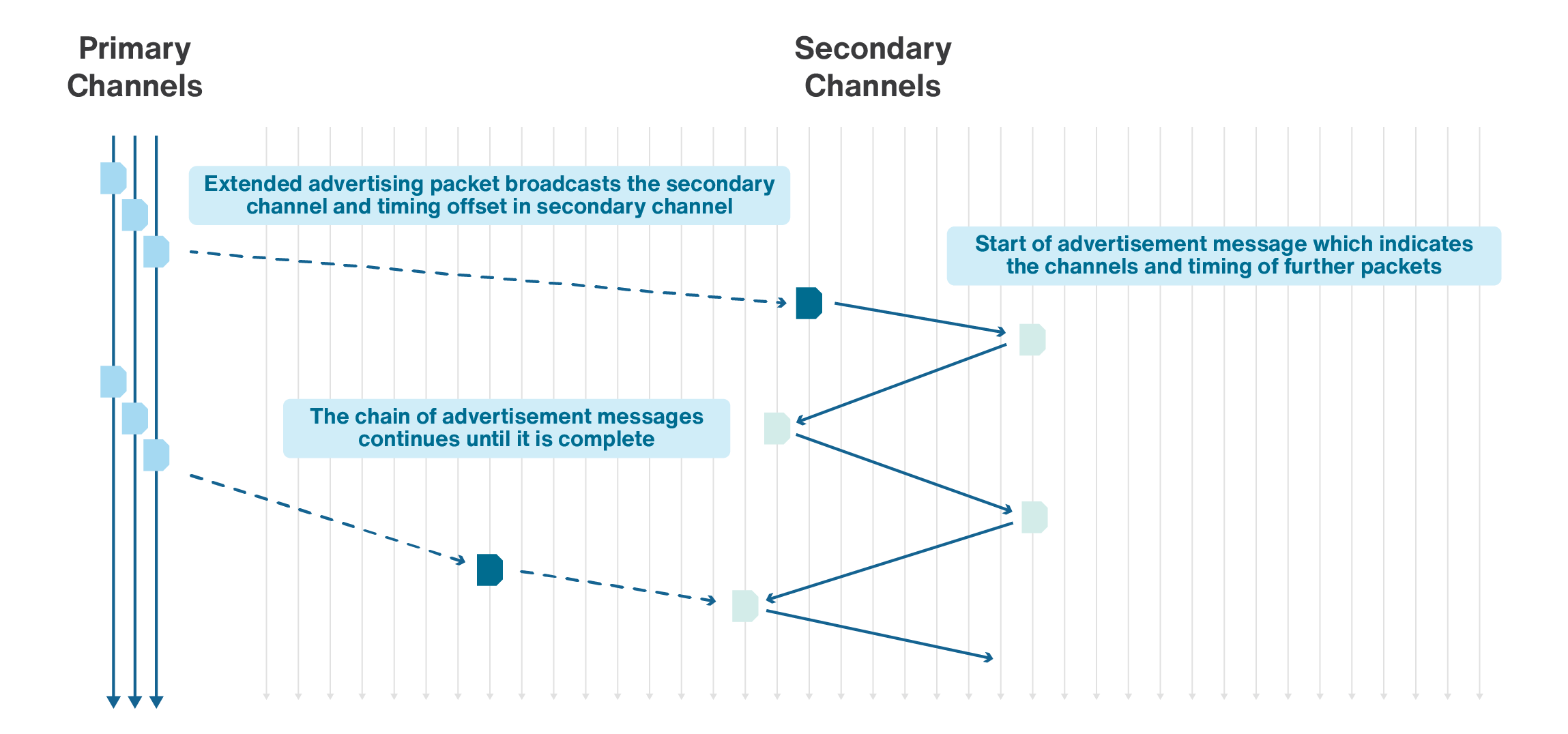Appendix B
At the physical layer, Bluetooth 5 supports speed of 2 Mbps. It doubles the symbol rate as compared to BLE V 4.2 in order to increase the data rate at the cost of slight reduction in the communication range. To be compatible with BLE, Bluetooth 5 also supports the data rate of 1 Mbps. At this data rate, each bit maps to a single radio symbol. To provide long-distance connections, Bluetooth 5 introduced the coded scheme at 1 Mbps physical layer as a new particular connection type that its primary goal is to improve the range of connectivity but with a lower bit rate. The coded physical layer provides relative data rates of 500 kbps or 125 kbps, using a forward error correction technique which replaces each bit into 2 or 8 bits, respectively. It is clear that the forward error correction provides better tolerance for bit errors. This results in improving the range of communication. The packet structure of un-coded 1 Mbps and 2 Mbps as well as coded physical layer is shown in Figure B.1.
Each packet in Figure B.1 starts with a preamble. A Bluetooth 5 receiver will use the preamble for frequency synchronization, automatic gain control training, and symbol timing estimation.

The preamble for the uncoded 1 Mbps and 2 Mbps physical layers consists of an alternating sequence of 0 and 1, where the LSB of the access address determines the first bit of this sequence. The preamble for the coded physical layer is fixed and consists of 10 repetitions of 0x3C.
Each link layer connection between any two nodes as well as each periodic advertisement is identified by a different Access Address (AA). The packet structure for coded physical layer contains there sections of preamble, FEC block 1 and FEC block 2. FEC block 1 has three fields: AA, Coding Indicator (CI), and Term 1 as shown in Figure B.1. The coding indicator consists of two bits, 00 indicates that FEC Block 2 is encoded using S8, and 01 indicates that FEC Block 2 is encoded using S2. Figure B.2 shows the way that FEC encoder and pattern mapper generate S2 or S8. As it is shown in this figure, S2 shows a situation that the input bits only go through the FEC encoder and the bits after leaving the FEC encoder are doubled. S8 shows that the input bits go through both the FEC encoder and the pattern mapper. The input bits are first doubled by FEC encoder and those bits are then quadrupled by the pattern mapper. Term1 is made of three consecutive zeros. It indicates a termination sequence which resets the FEC encoder.

The Protocol Date Unit (PDU) in Bluetooth 5 is either an advertising channel PDU or a data channel PDU. In uncoded physical layer, the PDU follows the access address field. An advertising channel PDU might be on the primary advertising channel or the secondary advertising channel. The data channel PDUs are the ones that are transmitted on a data channel. For error detection, there is a 3-byte CRC for each PDU. For coded physical layer, everything in FEC Block 2 is encoded according to the CI field in Block 1. Three consecutive zeros (Term2) terminate the transmission and reset the FEC encoder for Block 2.
For a N bit PDU (excluding the PDU header) and based on various types of physical layer (PHY), the information related to the physical layers of Bluetooth 5 is listed in Table B.1. The value of x represents the range achievable using 1 Mbps physical layer. If the other physical layer is used, the estimate of the range in terms of x is presented.
Table B.1: Various information related to the physical layers of Bluetooth 5

The bit data path for un-coded 1Mbps and 2Mbps PHYs as well as the coded PHY is shown in Figure B.3.

Data is encrypted (if needed) and CRC is added to the data. Data whitening process is then applied to both the PDU and CRC fields in order to prevent long sequences of repetitive bits (e.g., 00000000 or 11111111). Data whitening uses a 7-bit Linear Feedback Shift Register (LFSR) with taps at bit four and bit seven. For the coded physical layer, data also needs to pass through the FEC encoder and pattern mapper as it was explained earlier. At the receiver, the received packets also go through several processes similar to the transmitter side but in reverse order as shown in Figure B.4.

The extended advertising mode is an effective method to improve the performance of connectionless communication of advertising messages among nodes. This is done by integrating the advantage of random access control method used in advertising channels and a scheme of chained advertising information in data channels. In general, advertisements are used by nodes to send data that can be discovered and processed by observer nodes. This enables Bluetooth nodes to send data to multiple nodes at the same time, without having a connected peer-to-peer communication. To exploit the advantages of advertising, Bluetooth 5 introduces significant changes to advertising process. To provide backwards compatibility and interoperability, the three advertisement channels are going to remain similar to BLE 4.2. However, they are now called primary advertisement channels.
Bluetooth 5 has realized the popularity of its advertisement scheme in many IoT applications and therefore in addition to the existing three primary advertisement channels, it uses any of the remaining 37 data channels as secondary advertisement channels. This can help Bluetooth 5 to broadcast more advertisements as well as to offload the traffic of the primary channels. In other words, by using advertising extension, Bluetooth 5 offloads advertising data from only three advertising channels to all data channels. The peripheral nodes can send short extended advertising message in the primary advertising channels. The extended advertising message includes a pointer to a secondary advertising channel which is chosen randomly from the data channels. Table B.2 summarizes the differences between BLE and Bluetooth 5 advertising channel schemes in terms of advertising channels, the length of advertising messages and the physical layer modes of operation.
Table B.2: Differences between BLE version 4 and Bluetooth 5 advertising channel schemes

To allow the transmission of larger advertising data and to remove the need to duplicate the data payload on all three advertising channels, Bluetooth 5 allows a smaller packet sent on the three primary advertising channels to point to a larger packet sent at a later time on one of the 37 data channels. In Bluetooth 5, the maximum size of a single advertising packet can be 255 bytes of data, up from 37 in BLE 4.2. Advertising messages can now be chained together. This will allow for larger advertising packets as shown in Figure B.5. The maximum size of a chained advertising packet is 1650 bytes.

Periodic advertisement is another feature added to Bluetooth 5 in which a periodic advertiser broadcasts the packets, with size of up to 255 octets and with a regular interval ranging from 7.5 ms to almost 82 s. This is accomplished by hopping between the secondary channels in a predefined pseudo-random pattern. A scanner device is able to receive data from one or even several non-overlapping periodic advertisers. Higher data throughput is achievable by combining periodic advertisements with chained packets. This equips Bluetooth 5 with a more efficient and reliable solution for data broadcast than the one exists in BLE. Since advertising packets can be sent periodically, observers are allowed to join and lock on to a stream of advertising data. For instance, the periodic advertising can be used for sending synchronous data, like audio broadcasts. In this case, the new primary advertisement message points to an auxiliary packet which in turn specifies a “connectionless” chain of packets which hop at a known interval. This is illustrated in Figure B.6.

Maximum transmit power in Bluetooth 5 is +20dBm, up from +10dBm in BLE. It is clear that increasing the transmit power has direct relationship with the maximum range that the technology can support. There might be some restrictions to use +20dBm globally due to various regulatory bodies.

